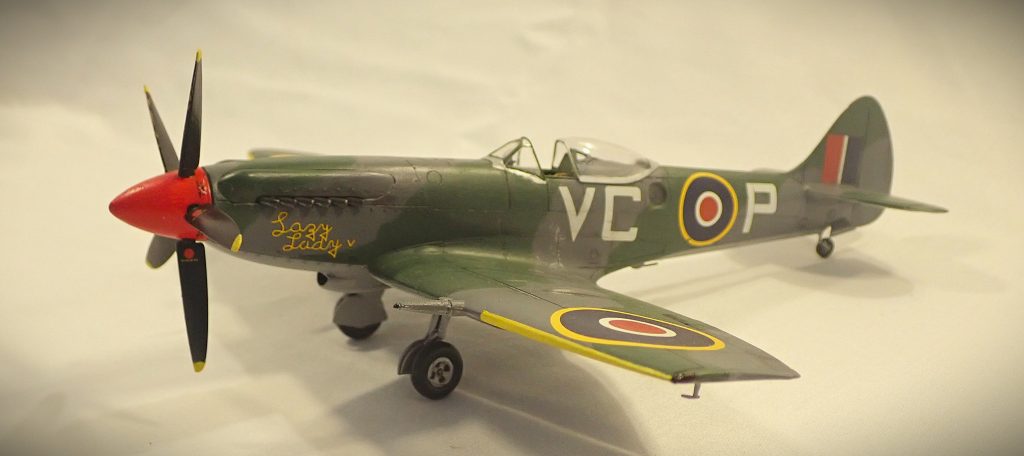After the Mk.IX series there were other improvements made to the Spitfire with the Mk.XII and MK.XVI, the third largest production Spitfire with over 3,000 built. However, Rolls-Royce had developed a much-improved Griffon engine which was to be included in almost all the later versions. The Griffon powered Spitfires were much faster than the Merlin powered with speeds exceeding 423mph. The test bed was a Mk.IV Spitfire which was later renamed Mk.XX and finally Mk.XII in 1942.
The Spitfire Mk.XII was the first Griffon powered Spitfire but only 100 were built with ‘c’ wing designation entering service in October 1942. The Griffon II or IV was used which gave incredible performance at low to medium altitude but much reduced at high altitude. It was credited with many kills including Fw190s, Bf 109s and 82 V-1 flying bombs.
The next production model was the vastly improved Mk.XIV. Many improvements were made and the new Griffon 65 series engine with 2,050hp improved speed and high-altitude performance. Top speed at 25,000 ft was 446mph. Other improvements included larger fuel tanks, clipped wings for low level performances, a pointed larger tail, strengthened and elongated undercarriage which eradicated the hump on the top of the wing and made the aircraft more stable on the ground and the new E wing with improved armament. Four Browning .50 were moved to the inner bays whilst the two 20mm Mk.V Hispano cannon were moved to the outer, with facility for drop tanks or bombs to be fitted. The longer Griffon engine meant for a longer nose section and later models had the reduced fuselage dorsal area with the teardrop canopy fitted. It was driven by a five-blade rotor unit to cope with the torque of the Griffon 65. In 1944, cameras were fitted to the Mk.XIV creating a new version, the FR Mk.XIVe (Fighter Reconnaissance/e wing).
In total there were 957 Mk.XIV’s built including 430 FR Mk.XIVe. Large numbers were exported after the war to various air forces including Royal Indian Air Force, Royal Belgian and Royal Thai.
This was the last Version of the Spitfire to see any action during WW2. Many other variants were produced after the war. The Spitfire, although retired from service in 1953, has never really been fully retired. There are so many airworthy examples in so many versions in so many countries, many of which are restored veterans of WW2, that they could form a whopping 10 full strength squadrons.
